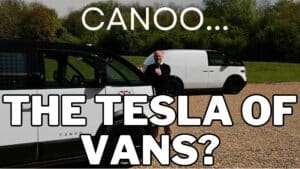Time flies by and already we’re a quarter of the way through the year. March is a critical month for the industry with manufacturers and dealers chasing quarter-end figures (and contemplating tactical self-registrations) not to mention the arrival of the ‘24’ registration plate, a time which always creates a blip although not on the scale of the old August 1st change as many of us will recall with either fondness or mild terror, depending on our employment at the time…
Let’s take our monthly look at the stats provided by the SMMT. Taking March in isolation, things look very healthy with an 11.1% increase in registrations compared to the same month last year. 2024 is demonstrating some solid growth with numbers being up 8.6% year to date, the strength being evident across all vehicle weights rather than one or two particular sectors.
Drilling down into fuel types, there’s a mixed picture when it comes to electric vans (BEVs). March has seen a 14.7% increase in registrations measured against the same month in 2023 compared to 9.9% for diesel-engined vehicles. Year to date, there’s been a 9.9% growth in the BEV numbers sold with diesel managing just 7.8%. It’s not all great news though. The market share of BEVs remains relatively static at 5.5% in the month (5.3% last year) and 5.2% year to date, just a 0.1% increase from 2023.
These numbers will be concerning to a number of manufacturers which, as regular readers of this newsletter will be aware are chasing the ZEV Mandate requirement that 10% of their registrations must be electrically powered. Thanks to the excellent, detailed data available to us from New Automotive, we can see who is making headway and which companies have some challenges ahead. Bear in mind that as we are 25% into the year, shortfalls apparent now will need to be made up with over-performance in the remaining 9 months. As we have mentioned in social media posts recently, there are some ‘loopholes’ available to those not managing to achieve the magical 10%, such as buying ‘credits’ from over-performing competitors (particularly interesting to the likes of Stellantis with multiple in-house brands), but these end in 2027 and at that point that 10% figure will have risen to 34%…
So, as of March, leading the way (with the exception of DFSK which only markets electric vehicles in the UK) is Maxus, with 10.6% of sales being BEV. With new, competitive products coming to the market this year, this number may well improve. Leading the way in the Stellantis stable is Peugeot, bang on 10% year to date leaving, perhaps surprisingly Vauxhall trailing at 7.9% and Citroen and Fiat further behind still. Renault has managed a very creditable 9.5%, even more impressive considering the new Trafic and Master have yet to come fully on stream. Of the others, worthy of mention is Volkswagen which has achieved 7.7% with just the iD Buzz Cargo on offer, this niche little van clearly appealing to some.
So, which companies might have cause to worry? Some big names have some serious work to do. Despite having established (although recently much improved and more competitive) electric van products, Mercedes-Benz has only achieved a 4.3% proportion of its sales to be of the BEV variety. Having an even greater task ahead is Ford, currently only having registered 397 electric vans this year, just 1.4% of its total. As we’ve said on many occasions previously, new product this year should help ease things, but there’s a lot of work to do here.




